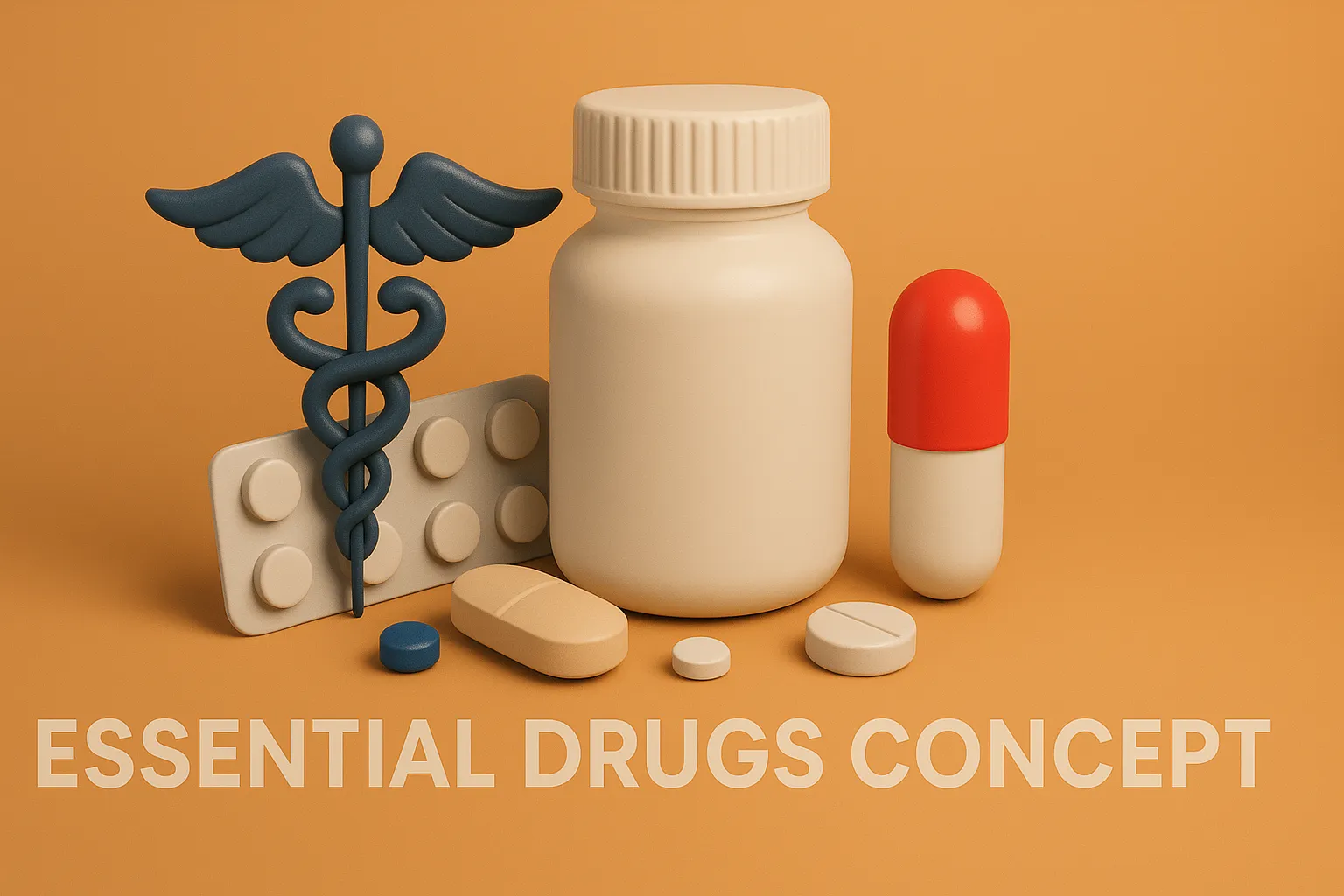Definition of Essential Drugs Concept
- Essential drugs (or essential medicines) are those that:
- Satisfy the priority health care needs of the population.
- Should be available at all times, in adequate amounts, appropriate dosage forms, with assured quality and affordable cost.
WHO Model List of Essential Medicines (EML)
- First published in 1977 with 208 drugs.
- Updated every 2 years by WHO experts.
- Divided into two categories:
- Core List: Minimum medicines needed for a basic healthcare system.
- Complementary List: Drugs for more specialized or complex situations (e.g., cancer, rare diseases).
Examples from the WHO list:
- Paracetamol – for pain and fever
- Amoxicillin – antibiotic
- Metformin – for diabetes
- Salbutamol – for asthma
- ORS (Oral Rehydration Salts) – for diarrhea
Criteria for Selection
- Public health relevance.
- Efficacy and safety.
- Cost-effectiveness.
- Scientific evidence.
Benefits Essential Drugs Concept
- Promotes rational use of drugs.
- Ensures accessibility and affordability.
- Helps in budget planning and procurement by governments and health organizations.
Click Here to Watch the Best Pharma Videos

